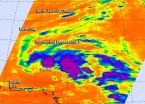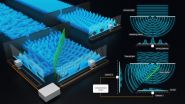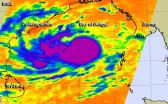(Press-News.org) SAN DIEGO – With football season in full swing, there's no shortage of talk about young players — from high school down to the pee wee levels — suffering from concussions. Yet many parents may lack knowledge about this mild traumatic brain injury, according to two studies to be presented Friday, Oct. 10 at a pre-conference symposium on pediatric sports medicine at the American Academy of Pediatrics (AAP) National Conference & Exhibition in San Diego.
Nearly 175,000 children are treated in U.S. emergency rooms each year for concussions due to sports-related activities, according to the Centers for Disease Control and Prevention. Parental knowledge of the signs and symptoms of concussion and recognizing that this is a brain injury is important to ensure children are diagnosed in a timely manner and get appropriate treatment.
Two separate studies looked at parents' knowledge of concussion and common misconceptions. They will be presented as part of the Peds21 symposium, "1, 2, 3, Go! Sports in the World of Pediatrics — Playing it Safe and Making it Fun!" in the San Diego Convention Center.
For the first abstract, titled "Parental Knowledge of Concussion," 511 parents of children ages 5-18 years who sought care at a pediatric emergency department within two weeks of their child suffering a head injury filled out a 24-item survey. They were asked questions about their demographics, their child's head injury, and general questions related to their knowledge of concussion and its treatment.
Results showed about half of parents correctly identified a concussion as a brain injury that could lead to symptoms such as headache or difficulty concentrating. No parental demographics (age, sex, education or prior history of sports participation) significantly predicted parents' knowledge about concussions.
The survey also indicated that almost all parents (92 percent) were aware that they should stop their child from playing and see a physician if they suspected a concussion. Yet only 26 percent were aware of guidelines on when their child could return to sports and school work.
"Our study showed that the vast majority of parents knew what to do if they suspected a concussion in their child and in most cases understood the clinical importance of this injury as a brain injury," said lead author Kirstin D. Weerdenburg, MD, FAAP, pediatric emergency medicine fellow at Hospital for Sick Children, Toronto, Ontario, Canada.
"The study also highlights that a physician visit shortly after the injury is important to confirm the diagnosis for parents and to inform parents of return to play/learn guidelines to ensure a proper recovery and prevent a second concussion while the brain is still healing," Dr. Weerdenburg said.
The authors of the second abstract, "Parental Misconceptions Regarding Sports-Related Concussion," also surveyed parents to assess their knowledge of concussions. The online survey was completed by two groups — 214 parents whose children were evaluated at a sports medicine clinic for musculoskeletal or mild traumatic brain injuries (group 1) and 250 parents of students at a local private school (group 2).
The survey included questions that gauged their knowledge of and attitudes about concussions as well as demographic information.
The majority of parents in both groups did well overall but had several misconceptions:
About 70 percent in group 1 and 49 percent in group 2 incorrectly believed that brain imaging (CT/MRI scans) can be used to diagnose concussion.
About 55 percent in group 1 and 52 percent in group 2 did not know that "bell ringer or ding" is synonymous with concussion.
Reduced breathing rate was incorrectly identified as a symptom by 25 percent and 29 percent, respectively.
Difficulty speaking was incorrectly identified as a symptom by 75 percent and 79 percent, respectively.
"Our study highlights the fact that many parents are still in need of education regarding concussion identification and post-injury evaluation. Even those highly educated parents were prone to misconceptions," said senior author Tracy Zaslow, MD, FAAP, medical director of the sports medicine and concussion program at Children's Orthopaedic Center, Children's Hospital Los Angeles. "False perceptions such as the ones pinpointed by our study may impact when medical care is sought after concussion and lead to less than optimal home care."
INFORMATION:
The studies will be presented from 11:30 a.m. to 12:30 p.m. Friday, Oct. 10 in Ballroom 6 CDEF of the San Diego Convention Center.
The American Academy of Pediatrics is an organization of 62,000 primary care pediatricians, pediatric medical subspecialists and pediatric surgical specialists dedicated to the health, safety and well-being of infants, children, adolescents and young adults. For more information, visit http://www.aap.org.
SAN DIEGO – Telling youths who are juggling multiple electronic devices to "focus on the task at hand" may not always be good advice, according to research to be presented by two high school students on Saturday, Oct. 11 at the American Academy of Pediatrics (AAP) National Conference & Exhibition.
Sarayu Caulfield and Alexandra Ulmer, seniors at Oregon Episcopal School in Portland, Ore., will present their study "Capacity Limits of Working Memory: The Impact of Media Multitasking on Cognitive Control in the Adolescent Mind" from 1-1:30 p.m. in Marina Ballroom Salon ...
SAN DIEGO – October 10, 2014. More than 90 percent of potential pediatric fractures are splinted improperly in emergency rooms and urgent care centers, which can lead to swelling and skin injuries, according to a study by researchers at the University of Maryland School of Medicine. The findings are being presented at the American Academy of Pediatrics (AAP) National Conference & Exhibition in San Diego.
The study looked at 275 cases involving children and teenagers up to the age of 18 who were initially treated in community hospital emergency rooms and urgent care ...
Ann Arbor, Mich. — A web-based system that allows preschools and child care centers to report illnesses to local public health departments could improve the detection of disease outbreaks and allow resources to be mobilized more quickly, according to University of Michigan research to be presented Saturday, Oct. 11 at the American Academy of Pediatrics (AAP) National Conference & Exhibition in San Diego.
Researchers who designed the biosurveillance system will describe how it can be used to track illness trends and improve public health response to outbreaks during ...
The seventh depression of the Atlantic Ocean Hurricane Season was born on Oct. 10, but it's subtropical. NASA's Aqua satellite looked at the developing depression in infrared light and saw strong thunderstorms within.
The Atmospheric Infrared Sounder or AIRS instrument aboard NASA's Aqua satellite captured data on developing Subtropical Depression 7 on Oct. 10 at 05:41 UTC (1:41 a.m. EDT). AIRS identified several areas of strong thunderstorms around the developing center of circulation. Some of those thunderstorms were high in the troposphere with cloud top temperatures ...
Observing the quantum behavior of light is a big part of Alan Migdall's research at the Joint Quantum Institute. Many of his experiments depend on observing light in the form of photons---the particle complement of light waves---and sometimes only one photon at a time, using "smart" detectors that can count the number of individual photons in a pulse. Furthermore, to observe quantum effects, it is normally necessary to use a beam of coherent light, light for which knowing the phase or intensity for one part of the beam allows you to know things about distant parts of ...
BOSTON – Email has become one of the most widespread forms of communication, with its streamlined interactions benefiting both businesses and individuals. With the advent of secure patient web portals and the faith that online access has the potential to improve care, the medical industry is slowly catching up.
And while it may take time before it's known what impact email exchanges might have on patients and their care, a new study from Beth Israel Deaconess Medical Center (BIDMC) offers some early insights into the effects on doctors, suggesting that reimbursement ...
Super Typhoon Vongfong continued on its trek north through the Philippine Sea while slightly weakening on Oct. 10. NASA's TRMM and Aqua satellites provided forecasters with cloud extent, rainfall rates and distribution and more.
Vongfong was a super typhoon with wind maximum sustained winds of 145 knots (167 mph) when the TRMM satellite flew over on October 8, 2014 at 2328 UTC 7:28 p.m. EDT). TRMM's Microwave Imager showed that Vongfong was producing rainfall over a large area and heavy rainfall in the eye wall (the powerful thunderstorms around the open eye) and in multiple ...
DURHAM, N.C. –- No single "one-size-fits-all" model can explain how biodiversity hotspots come to be, finds a study of more than 700 species of reptiles and amphibians on the African island of Madagascar.
By analyzing the geographic distribution of Madagascar's lizards, snakes, frogs and tortoises, an international team of researchers has found that each group responded differently to environmental fluctuations on the island over time.
The results are important because they suggest that climate change and land use in Madagascar will have varying effects on different ...
NASA's Aqua satellite passed over Tropical Cyclone Hudhud on Oct. 10 as it reached hurricane-force.
The Atmospheric Infrared Sounder or AIRS instrument that flies aboard NASA's Aqua satellite read temperatures of thunderstorm cloudtops that make up Tropical Cyclone Hudhud when it passed overhead on Oct. 9 at 19:53 UTC (3:53 p.m. EDT). The data showed the coldest cloud top temperatures were in thunderstorms circling a developing eye. Cloud top temperatures were as cold as -63F/-53C, which have the potential for dropping heavy rainfall.
Hudhud's maximum sustained winds ...
Small cues that display a user's transaction history may help a website feel almost as interactive as chatting with an online customer service agent, paving the way for more cost-effective websites, according to researchers.
"One of the challenges with online interactivity is trying to imbue the site with a sense of contingency -- the back-and-forth feel of a real conversation," said S. Shyam Sundar, Distinguished Professor of Communications and co-director of the Media Effects Research Laboratory. "What we found is that providing some information about a user's interaction ...




